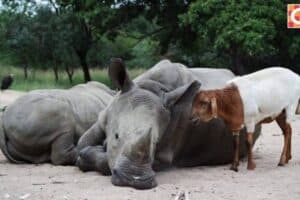Our scientists and game rangers have pioneered the technique of dehorning rhinos to make them less attractive targets for poachers.

While it is commendable that Kenyan efforts to conserve rhino are gaining momentum, we need to disabuse Dr Dominic Mijele from the Kenya Wildlife Service that his country is “number one in the world” when it comes to translocating rhinos.
No, doc. You need to look further south to find the real experts: South Africa, after all, started the concept with the iconic “Operation Rhino” in the 1960s, which saw around 4 000 rhino relocated from reserves in KwaZulu-Natal to other African countries where they were threatened with extinction because of hunting.
Now, as worldwide poaching and the demand for rhino horn ratchets up, South Africa is still in the forefront of the fight to save these iconic animals.
ALSO READ: Rhino whisperer fights poaching with drone campaign
Our scientists and game rangers have pioneered the technique of dehorning rhinos to make them less attractive targets for poachers.
A seven-year study in one of our major conservation areas has shown that dehorning resulting in a nearly 80% reduction in the poaching of the animals.
It was also scientists from Wits University’s radiation and health physics unit who came up with the idea of injecting radioactive material into live rhino horns to make them easier to detect at borders.
Sounds like world-leading to us…
NOW READ: ‘Relentless threat to wildlife’: Here’s how many rhinos were poached in SA in 2025 so far






